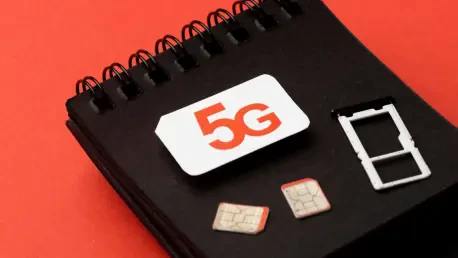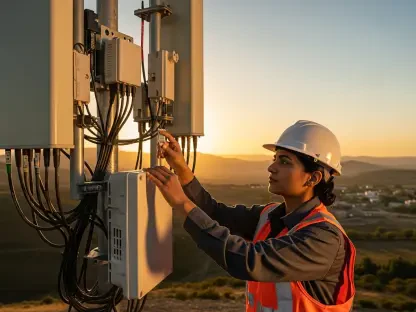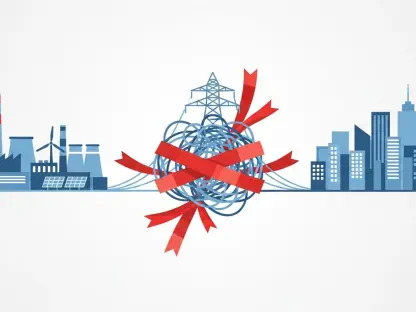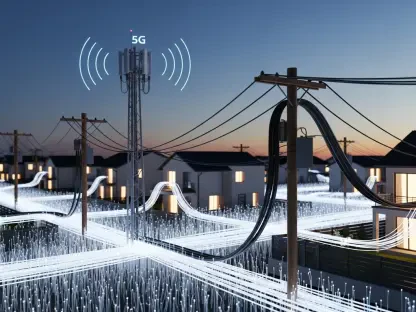Imagine a bustling city like Pune, often hailed as the cultural and educational hub of Maharashtra, stepping into a new era of connectivity where lightning-fast internet transforms daily life—from seamless remote work to immersive entertainment. This vision is becoming reality with Vodafone Idea (Vi) launching its 5G services in Pune, marking a significant milestone in India’s telecom landscape. This roundup dives into diverse opinions, expert insights, and strategic analyses surrounding Vi’s efforts to revolutionize connectivity in the city, exploring how this rollout impacts users, industry trends, and competitive dynamics. The purpose is to gather varied perspectives on what this development means for residents, businesses, and the broader telecommunications sector.
Exploring the Significance of 5G in Pune
Pune’s emergence as the fifth city in Maharashtra to access Vi’s 5G network has sparked discussions among industry watchers about its strategic importance. Known for its vibrant IT and educational sectors, the city represents a critical testing ground for next-generation connectivity. Many stakeholders view this rollout as a step toward bridging the digital divide in urban centers with high data demands, positioning Pune as a key player in Vi’s plan to cover 17 priority telecom circles across India.
Beyond local impact, analysts highlight that targeting a city with Pune’s demographic and economic profile signals a focus on capturing tech-savvy users and businesses reliant on robust internet. Some industry observers note that this move could set a precedent for how telecom providers prioritize urban expansion while balancing rural outreach. The consensus leans toward viewing Pune’s inclusion as a calculated effort to build momentum in Maharashtra, a state with significant market potential.
A differing perspective comes from those who caution against over-emphasizing urban rollouts at the expense of less-connected regions. While acknowledging the excitement around 5G in cities, certain voices in the sector argue that equitable distribution of advanced networks remains a challenge. This debate underscores the broader question of how telecom giants like Vi will balance innovation with accessibility in a diverse market like India.
User Experience and Accessibility: What Experts Are Saying
Introductory Offers and Adoption Challenges
Vi’s approach to making 5G accessible in Pune has garnered attention for its user-centric introductory plans, particularly the unlimited 5G data offer starting at INR 299 (about $3.40). Many industry commentators praise this pricing strategy as a way to lower entry barriers for users with compatible devices, potentially accelerating adoption among tech enthusiasts and early adopters. The affordability factor is seen as a competitive edge in a price-sensitive market.
However, some digital adoption specialists point out that widespread uptake hinges on more than just pricing. Challenges like limited availability of 5G-enabled smartphones among the general population could slow progress. There’s a shared concern that without targeted education campaigns to highlight 5G’s benefits—such as faster downloads or enhanced streaming—many users might hesitate to upgrade their plans or devices.
Another angle comes from consumer advocates who stress the importance of transparency in such rollouts. They suggest that while introductory offers are enticing, long-term value and service reliability will ultimately determine user satisfaction. This perspective emphasizes the need for Vi to maintain quality as more subscribers join the 5G bandwagon in Pune, ensuring that initial excitement translates into sustained loyalty.
Tech Partnerships and Infrastructure Insights
Vi’s collaboration with Ericsson to deploy energy-efficient infrastructure and AI-driven Self-Organizing Networks (SON) has been a focal point for tech analysts. Many commend this partnership for aligning with global trends toward sustainability and automation in telecom, noting that such innovations can handle escalating data demands while reducing operational costs. The use of cutting-edge solutions is often cited as a forward-thinking move for network optimization.
On the flip side, some industry insiders express reservations about the risks of relying heavily on foreign technology vendors. Concerns include high initial investment costs and potential supply chain vulnerabilities, which could impact scalability if not managed carefully. This viewpoint suggests that while partnerships bring expertise, domestic alternatives or diversified collaborations might offer more resilience in the long run.
A balanced take comes from technology consultants who argue that Vi’s adoption of such advanced systems positions it well against competitors, especially in urban markets like Pune where network performance is critical. They highlight that the real test will be in how these technologies translate into tangible benefits for users, such as reduced latency or improved coverage, setting a benchmark for others in the sector to follow.
Network Strategy: Balancing 4G and 5G Investments
Strengthening 4G as a Backbone
Vi’s simultaneous enhancement of its 4G network across Maharashtra and Goa, including over 7,900 sites upgraded for indoor coverage and 2,100 new sites added in recent months, has drawn varied reactions. Many telecom strategists applaud this dual focus, arguing that a strong 4G foundation is essential for a smooth transition to 5G, especially in densely populated areas like Pune where not all users are ready for the next-gen switch. This approach is seen as pragmatic in a heterogeneous market.
Others in the field note that bolstering 4G coverage, which now reaches 84% of India’s population, demonstrates a commitment to inclusivity. They point out that for many users, particularly in semi-urban pockets around Pune, reliable 4G remains more relevant than cutting-edge 5G. This perspective reinforces the idea that legacy networks play a vital role in ensuring no segment of the population is left behind during technological leaps.
A contrasting opinion emerges from futurists in the telecom space who caution against over-investing in older infrastructure at a time when global trends push toward 5G and beyond. They suggest that while 4G upgrades are necessary, the pace of 5G deployment must not slow down, as competitors could gain an edge by prioritizing next-gen rollouts. This debate highlights the delicate balance Vi must strike between immediate needs and long-term vision.
Late-Mover Advantages in 5G Deployment
The delayed timing of Vi’s 5G rollout compared to rivals has sparked a unique discussion among industry players. Several market analysts view this as a strategic advantage, pointing to Vi’s adoption of cost-effective technologies like Disaggregated Radio Access Network (RAN) systems. They argue that entering the 5G race later allows the company to leverage more mature, efficient solutions, potentially reducing deployment expenses and enhancing scalability.
A differing stance comes from competitors’ advocates who believe that being a late mover risks losing early market share to established 5G providers. They contend that brand perception and customer loyalty could tilt toward those who pioneered the technology, even if later entrants offer superior systems. This viewpoint underscores the challenge of rebuilding trust and visibility in a crowded field.
Yet, sustainability experts offer a fresh lens, suggesting that Vi’s timing aligns with growing industry emphasis on eco-friendly practices. By integrating newer, energy-efficient technologies, the company not only cuts costs but also appeals to environmentally conscious stakeholders. This angle positions Vi’s strategy as a potential differentiator, blending economic and ecological goals in a way that could reshape competitive dynamics over time.
Key Takeaways from Diverse Voices
Reflecting on the range of insights gathered, it’s clear that Vi’s 5G launch in Pune stirred a spectrum of reactions, from enthusiasm over affordable plans and tech partnerships to cautious notes on adoption hurdles and competitive timing. The consensus among various stakeholders was a recognition of the transformative potential of this rollout, balanced by an understanding that success depends on addressing user education, infrastructure reliability, and strategic prioritization of both 4G and 5G networks.
Looking back, the discussions also revealed a shared appreciation for the innovative steps taken, such as leveraging late-mover advantages and sustainable technologies, which have positioned Vi as a noteworthy contender in India’s telecom arena. For those eager to dive deeper into this evolving landscape, exploring industry reports on telecom trends or local updates on 5G availability in other cities proves to be a valuable next step. Additionally, engaging with community forums or user reviews offers practical insights into how such connectivity shifts impact daily digital experiences, paving the way for informed decisions about adopting new technologies.









